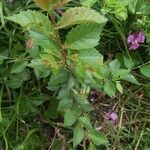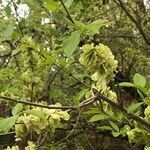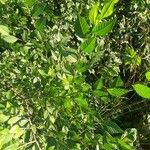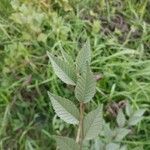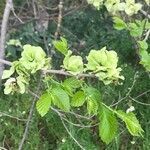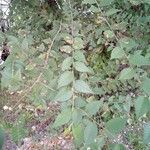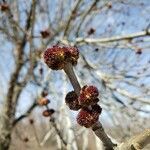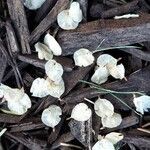Trees , 15 to 30 m; crowns open. Bark gray to brown, deeply furrowed with interlacing ridges. Wood brittle. Branches not winged; twigs gray-brown, pubescent. Buds dark brown, ovoid, glabrous; scales light brown, shiny, glabrous to slightly pubescent. Leaves: petiole 2-4 mm, glabrous. Leaf blade narrowly elliptic to lanceolate, 2-6.5 × 2-3.5 cm, base generally not oblique, margins singly serrate, apex acute; surfaces abaxially with some pubescence in axils of veins, adaxially glabrous; lateral veins forking to 3 times per side. Inflorescences tightly clustered fascicles, 6-15-flowered, 0.5 cm, flowers and fruits not pendulous, sessile. Flowers: calyx shallowly lobed, lobes 4-5, glabrous; stamens 4-8; anthers brownish red; stigmas green, lobes exserted. Samaras yellow-cream, orbiculate, 10-14 mm diam., broadly winged, glabrous, tip notched 1/3-1/2 its length. Seeds thickened, not inflated. 2 n = 28.
A medium sized tree. The branches are more upright than Chinese elm. It loses its leaves during the year. It grows 20 m tall. The bark is dark grey and rough and corrugated. The leaves are narrowly oval and 6 cm long by 2.5 cm wide. They are nearly equal sided at the base. They taper to a point. They have sharp teeth. They are dark green above. The flowers are very small and red. They are in clusters on shoots. The fruit is a small seed with a green wing around it. It is 1.2 cm long.
